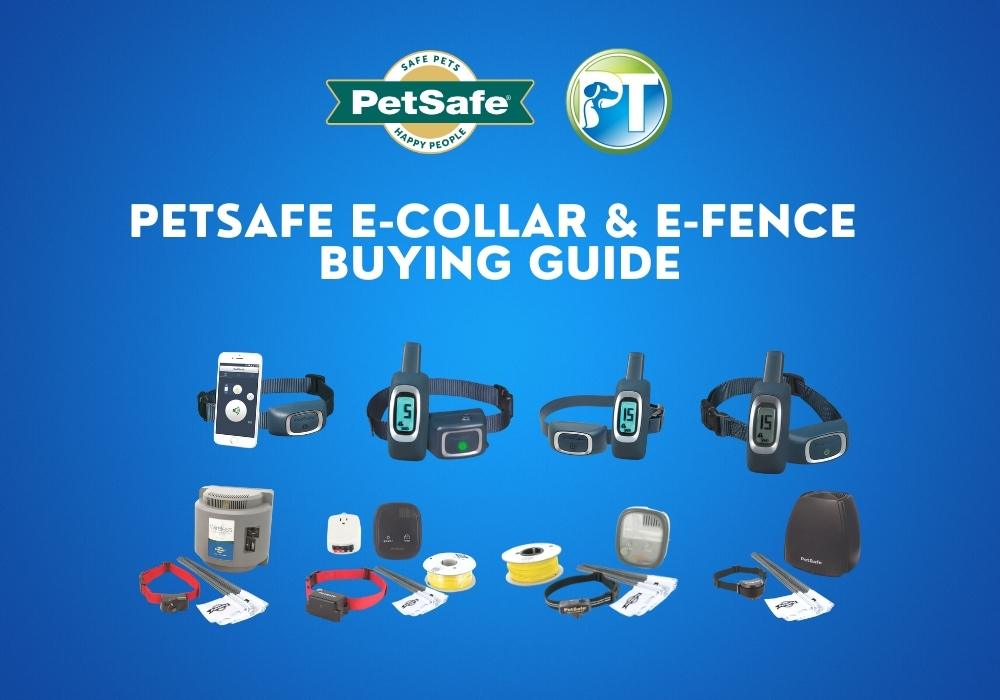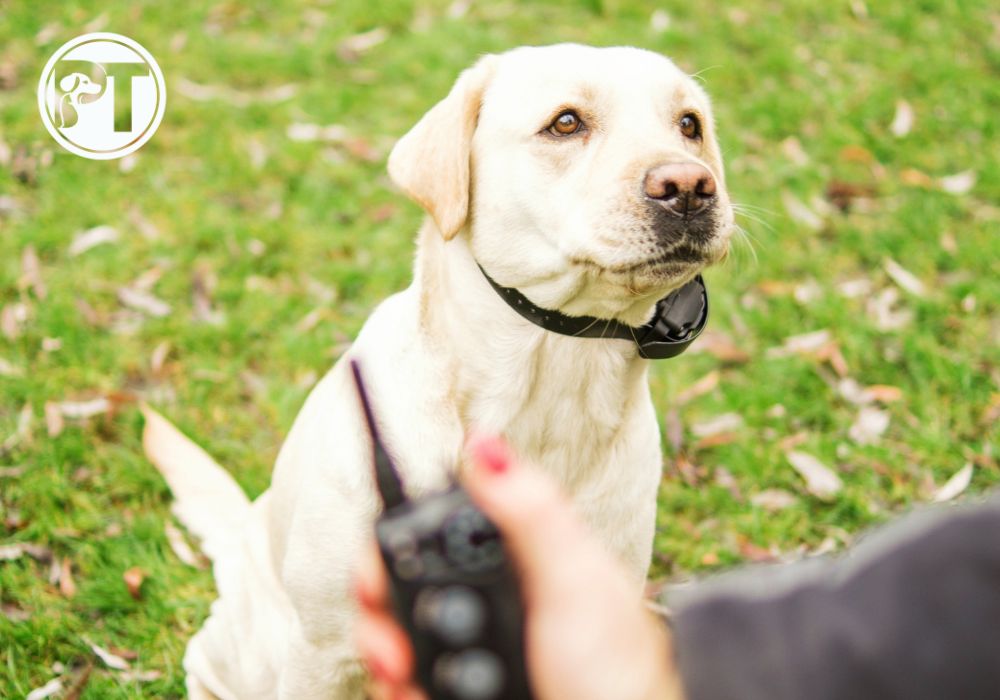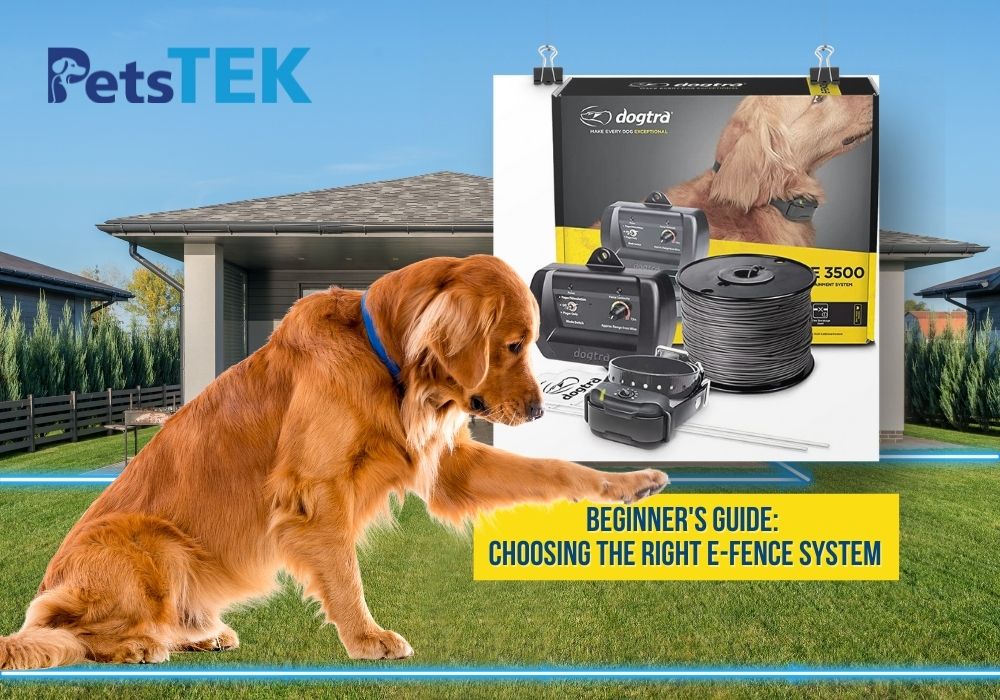Training Your Dog to Understand E-Fence Boundaries – Step by Step Guide
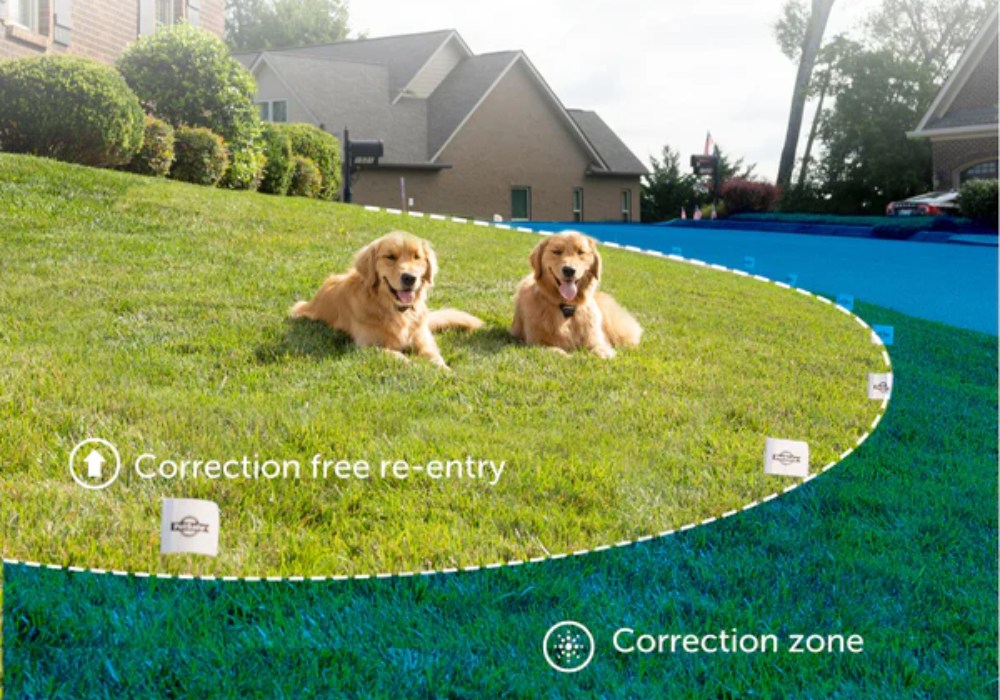
E-fences, or electronic fences, are a popular choice for dog owners seeking a reliable way to keep their pets contained. These systems allow dogs to roam freely within a designated area, while ensuring their safety and security.
However, choosing the right e fence unit is only half the battle. Remember, the effectiveness of these systems depends on their proper usage and training.
In this blog, we’ll walk you through on how to train your dog to understand e fence boundaries. Read on.
Preparation for E-Fence Training
I. E-Fence Selection
Before your training, decide between a wireless and in-ground system based on your needs and budget. Understanding the features and benefits of each type is crucial.
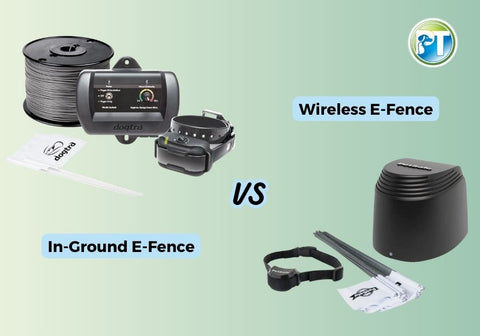
Wireless vs. In-Ground
1. In-Ground Fence
- More permanent solution for larger areas
- Requires burying a wire, which can be time-consuming but offers a more reliable boundary.
- Easier to install and ideal for smaller yards or temporary containment
- Range varies depending on the system.
- Consider potential interference from other wireless devices.
To make an informed decision, explore more details on how to choose the right e-fence for your dog here.
II. E-Fence Installation Process
Proper setup of the dog electric fence system is essential for effective containment. Carefully read the e fence manual provided by the manufacturer, as each system comes with specific installation instructions. Following the manual ensures proper setup and the safety of your dog within the designated boundaries.
Nevertheless, here are the general installation steps for both wireless and in-ground systems:
1. Read the manual carefully.
Each system has specific installation instructions.
2. Set up the transmitter.
This is the central unit that sends the signal to the dog collar. Place it in a dry, central location.
3. Install the electric dog fence boundary wire (in-ground only).
Bury the wire according to the manufacturer's instructions, ensuring proper depth and connections.
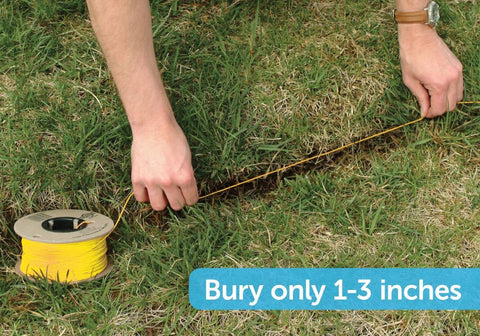
4. Test the system.
Check the signal strength and boundary accuracy before putting the collar on your dog.
5. Place the boundary flags.
Demonstrate how to define the boundaries clearly, considering the dog's usual play areas and potential risks. This includes establishing safe zones and off-limits areas.
To mark the perimeter, use a test light tool and activate the collar while approaching the boundary. Place a boundary flag in the area where the collar beeps or the test light flashes. Repeat this process until all flags (with 10-ft interval between two boundary flags) have been placed surrounding your boundary layout.
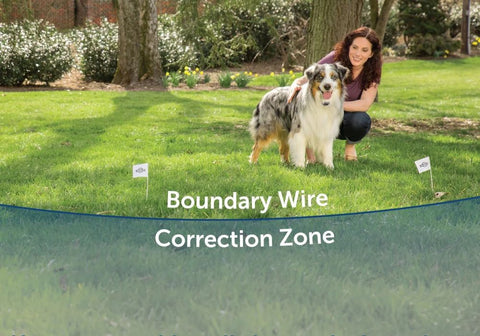
III. E-Collar Fitting
After installing the e fence boundary flags, fit the collar on your dog while it is turned off. Ensure the collar is snug but not overly tight, allowing for one or two fingers to fit comfortably between the collar and the dog's neck. Position the collar receiver in a way that the contact points press firmly against the dog's skin. This ensures consistent contact, preventing inconsistencies in corrections.

If the e collar receiver is too loose, it may lead to ineffective corrections, impacting the training process. Remember, a well-fitting collar ensures your dog's comfort and safety while maximizing the effectiveness of the e-fence system.
For personalized recommendations, you might also want to consider consulting a professional dog trainer.
E Fence Training: A Step-by-Step Guide
Phase 1: Collar Introduction
Important Note: The suggested time frames provided for each phase are flexible. Also, the duration for the steps can vary, depending on your dog's individual pace and learning abilities.
I. Safe Zone Exploration (Collar Off)
Duration: 1-2 days
Goals: Get your dog comfortable with the e fence collar. Introduce your dog to the designated "safe zone."
Steps:
- Put the collar on your dog and let them adjust to its weight and feel.
- Engage in fun activities like playing, offering treats, and praising your dog within the safe zone. This helps them associate wearing the collar with positive experiences.
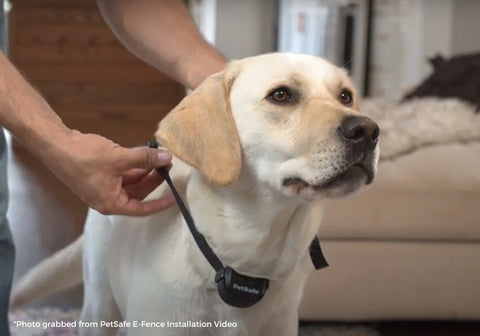
II. Boundary Introduction (On Leash)
Duration: 3-5 days
Goals: Introduce your dog to the boundary line while on leash.
Important Note: Avoid attaching a leash to the receiver collar to prevent putting pressure on the contact points on your dog’s neck.
Steps:
- Set the collar to a warning tone or vibration.
- Walk your dog toward the electric dog fence boundary, and allow them to hear the tone or feel the vibration.
- After experiencing the warning signal, quickly pull them back to the safe area of the yard while giving the “No!” command. The goal is for your dog to retreat from the boundary line promptly upon hearing the warning tone/vibration.
- Reward your dog after backing away into the safe zone. Offer plenty of praise to create a positive association with staying within the safe area.
- Conduct 2-3 training sessions, each lasting 5-10 minutes at different points around the boundary.
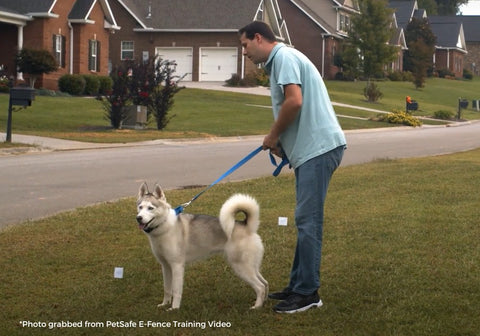
Phase 2: Boundary Awareness and Correction
Duration: 6-9 days (adjust based on your dog's progress)
Goals: Encourage respect for the warning tone and prompt avoidance of the correction zone.
Steps:
- Set the collar receiver to a warning setting followed by the lowest correction level of static.
- Walk your dog to the boundary, gradually increasing the distance between yourself and your dog while walking on a leash.
- If your dog stops or retreats upon hearing the warning signal, immediately offer verbal praise and treats.
- If your dog ignores the tone and approaches the correction zone, observe for signs of a response to the static correction. If there's a mild reaction like turning their head, promptly redirect them back with your voice and leash, then reward. Otherwise, adjust the correction level until you find the perfect stimulation setting.
- Conduct 2-3 training sessions around the entire boundary, ensuring your dog understands the limits at all points.

Phase 3: Testing with Distractions
Duration: 10-14 days (adjust based on your dog's progress)
Goals: Ensure your dog fully comprehends the new boundary rules by introducing distractions.
Steps:
- Consider your dog's individual triggers and use them as distractions. Use the same stimulation level from the previous training.
- Begin with your dog on a long leash inside the safe zone. Introduce a temptation (such as throwing a ball or toy) on the other side of the fence line.
- If your dog stops at the boundary line despite the distraction, reward them with praise and a treat. If your dog attempts to cross the boundary line, give the “No!” command and promptly pull them back into the containment zone. Once they are back inside the boundary, offer praise to reinforce the desired behavior.
- Otherwise, if your dog crosses the boundary line, you need to spend additional time reinforcing the boundary rules and then re-test.
- Increase the difficulty of the distraction only as your dog gains confidence in adhering to the boundary rules.
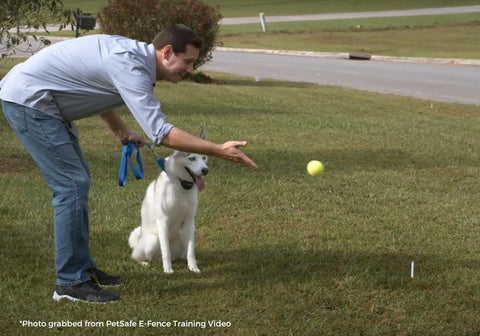
Phase 4: Reinforcement and Off-Leash Freedom
Duration: Week 3 onward (adjust based on your dog's progress)
Goals: Gradually allow your dog off-leash freedom within the safe zone, ensuring they maintain respect for the boundary even with distractions.
Steps:
- Begin with short, supervised off-leash sessions within the safe zone. Keep a leash handy for initial control if needed.
- If your dog respects the boundary, reward them with praise and treats. Gradually increase your distance from them and engage yourself in a task.
- Start with 15-minute off-leash sessions and gradually extend them to 1 hour or more as your dog demonstrates consistent good behavior.
- If your dog shows reliable behavior, leave them alone inside the safe zone with the e-fence active. However, never leave them unsupervised until you're confident in their understanding.
- Continue this process for several weeks, adjusting the duration, distractions, and supervision level based on your dog's progress.

Once your dog consistently shows respect to the boundary despite distractions, they are ready to use the e fence independently.
Monitoring and Maintaining Your Electronic Fence System
An electric dog fence offers your furry friend freedom within defined boundaries. However, just like any system, it needs regular care to ensure its effectiveness and your pet's safety.
Visual Inspection and Testing
- Regularly walk the perimeter: Check for any visible signs of damage to the wire, such as cuts, tears, or chew marks. Pay close attention to areas where the wire is exposed, like under fences or near trees.
- Inspect the transmitter: Look for any signs of damage, corrosion, or loose connections. Ensure the unit is clean and free of dust or debris.
- Examine the collar: Check for damaged straps, worn contact points, or loose batteries. Clean the contact points regularly with a damp cloth. Test the collar to ensure it’s working properly.
Proactive Maintenance
- Trim vegetation: Regularly trim grass, weeds, or branches that might come into contact with the wire, potentially causing damage or signal interference.
- Invest in a wire splice kit: This handy kit allows you to easily repair small wire breaks without needing professional help. Keep it readily available for quick fixes.
PetsTEK E-Fence Wire Splice Kit for Wire Break Repair
The Petstek E-Fence Wire Splice Kit offers a quick and reliable solution for repairing or connecting broken wires in your e-fence system. The splice kit is available in packs of 10 and 25.

Key Features:
- Versatile: Works with all underground fence systems and various other electrical applications.
- Waterproof: Each tube is filled with a sealing gel for lasting protection against rust and corrosion.
- Compatible: Fits 12, 14, 16, 18, and 20 gauge wires.
- Durable: Made with high-quality PVC for long-term performance.
Best E Fences for Dogs
For e-fence recommendations, PetsTEK has you covered:
1. Best Overall In-Ground E-Fence: Dogtra E-Fence 3500
The Dogtra E-Fence 3500 is an underground containment system that keeps your dogs safe and secure in your property. It comes with 8 levels of adjustable stimulation and is perfect for dogs 15 pounds and larger. Moreover, it features an advanced radio frequency filtering system that ensures accurate activation. It also has a field width adjustment knob, allowing you to easily adjust the signal width based on your property size. This system is expandable to cover up to 40 acres.
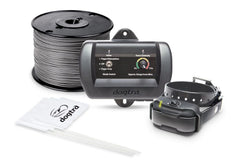
2. Best Easy-Install In-Ground Fence: E-Collar Technologies PF-1000 In-Ground E-Fence
The E-Collar Technologies PF-1000 E-Fence Self-Install Kit is a safe and humane way to keep your dog contained in your yard. The kit includes everything you need to set up a containment system in just a few hours. This electronic fence can be configured to your property size and shape. The collar receiver is customizable to your dog’s temperament with adjustable stimulation levels. The kit also features a tone-only mode for highly sensitive dogs, over-stimulation prevention, and a run-through prevention system.
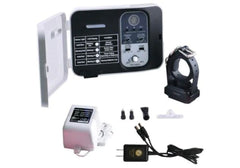
3. Best Wireless Fence for Small Dogs: Petsafe PIF00-12917 Stay and Play Compact Wireless Fence
The PetSafe Stay & Play Compact Wireless Fence is a wireless fence system that allows your dogs to roam safely in your yard or on the go. It features a 3/4-acre circular area of coverage, 5 correction levels, and a tone-only option. This PetSafe wireless fence has a waterproof receiver collar for dogs 5 pounds or larger.
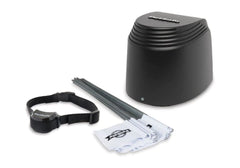
4. Best Wireless Fence for Stubborn Dogs: PetSafe PIF00-13663 Stay and Play Wireless Fence
The PetSafe Stay and Play Wireless Fence for Stubborn Dogs is a wireless fence that helps contain your dogs within your property. It has a wide range of correction levels, allowing you to tailor the correction to your dog’s needs. With its tone-only mode, this is excellent if you have a dog that is more sensitive to static correction. This fence has a 3/4-acre circular coverage area and is ideal for dogs 5 pounds or larger.
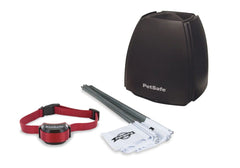
Final Thoughts
With responsible use and proper training, e-fences can be a valuable tool for both dogs and their owners, offering freedom, safety, and peace of mind.
You might also enjoy...
-
Posted in
E-Collar Info & Guides, Pet Training, Training Tips
